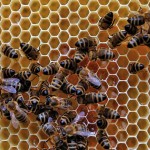
Tag Archives Plant reproduction

Video: Exhibit shows pollination isn’t only done by bees
Museum curator Diana Bizecki Robson hopes it helps public deepen their understanding of all types of pollinators and to take actions that help these organisms thrive

Bee foraging chronically impaired by pesticide exposure
Another study sheds light on why neonicotinoids and bees don’t mix

Honey farmers named Red River Ex Farm Family of the Year
Starbuck-area producers Phil Veldhuis and Vona Guiler embrace a modern model of Manitoba homesteading

Wondering about the state of the environment?
Just eavesdrop as bees communicate with each other on where to find the best eats

Late corn planting sees more bees flying
Keeping bees at bay when it comes to corn planting isn’t always possible, but good communication goes a long way

U of M project puts DIY back into plant breeding
DIY has done wonders in the metal shop. Why not try it in the fields, too?
CFA joins coalition supporting plant breeders’ rights changes
The bill to update Canada’s plant breeders’ rights provisions is before Parliament

Dependable dieffenbachia
This plant is easy to grow and adaptable to many conditions

Agriculture debate on Bill C-18 sours quickly
The government says opposition MPs, but critics say the government was late introducing the legislation for debate
Plant Breeders’ Rights (PBR) and Bill C-18
Despite what detractors say, both farmers and breeders will benefit


